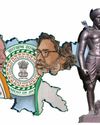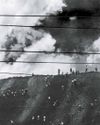Cheaper and better batteries are set to revolutionise the concept of energy storage. Here is the tech spark that triggered the illuminating possibility of clean energy.

When Chetan Maini rolled out Reva, India’s first electric car, in 2001, he used 250-kg lead-acid batteries that ran for about 80 km and took eight hours to charge. Today, the best lithium ion (li-ion) batteries, he says, could take you, for the same weight of batteries, roughly 600 km, last five times longer and charge in less than an hour. “It’s still going to cost a lot more, of course, and yet it’s no small transition. And it’s been getting better every year,” says Bangalore-based Maini. Better, because the cost of li-ion batteries has come down almost eight per cent every year, on an average, in the past 15 years.
The next generation of batteries—and people are looking beyond li-ion—could potentially offer more energy density and possibly fix some of those niggles seen in consumer devices, the fires especially. And, while new battery technology doesn’t exactly roll out into the market as quickly as new mobile phone models do, the pace, from a chemistry point of view, has been dramatic. If it weren’t so, points out one expert, we would still be stuck with nickel-cadmium. And, yes, we wouldn’t be talking about the iPhone X, or smartphones in the first place.
“The fundamental change has been in terms of cost reduction. We were talking about $500 per kilowatt hour (kWh) some years ago; today we talk about $250 per kWh. So the cost has halved in just four or five years,” says Venkat Srinivasan of the Argonne National Laboratory in the US, where he heads the Collaborative Centre for Energy Storage Science. “Countries are now talking about having aggressive targets because they feel this is within reach. It doesn’t sound like fusion or something that is always 20 years away.”
This story is from the November 27, 2017 edition of Outlook.
Start your 7-day Magzter GOLD free trial to access thousands of curated premium stories, and 9,000+ magazines and newspapers.
Already a subscriber ? Sign In
This story is from the November 27, 2017 edition of Outlook.
Start your 7-day Magzter GOLD free trial to access thousands of curated premium stories, and 9,000+ magazines and newspapers.
Already a subscriber? Sign In

Trump's White House 'Waapsi'
Donald Trump's victory in the US presidential election may very well mean an end to democracy in the near future

IMT Ghaziabad hosted its Annual Convocation Ceremony for the Class of 2024
Shri Suresh Narayanan, Chairman Managing Director of Nestlé India Limited, congratulated and motivated graduates at IMT Ghaziabad's Convocation 2024

Identity and 'Infiltrators'
The Jharkhand Assembly election has emerged as a high-stakes political contest, with the battle for power intensifying between key players in the state.

Beyond Deadlines
Bibek Debroy could engage with even those who were not aligned with his politics or economics

Portraying Absence
Exhibits at a group art show in Kolkata examine existence in the absence

Of Rivers, Jungles and Mountains
In Adivasi poetry, everything breathes, everything is alive and nothing is inferior to humans

Hemant Versus Himanta
Himanta Biswa Sarma brings his hate bandwagon to Jharkhand to rattle Hemant Soren’s tribal identity politics

A Smouldering Wasteland
As Jharkhand goes to the polls, people living in and around Jharia coalfield have just one request for the administration—a life free from smoke, fear and danger for their children

Search for a Narrative
By demanding a separate Sarna Code for the tribals, Hemant Soren has offered the larger issue of tribal identity before the voters

The Historic Bonhomie
While the BJP Is trying to invoke the trope of Bangladeshi infiltrators”, the ground reality paints a different picture pertaining to the historical significance of Muslim-Adivasi camaraderie